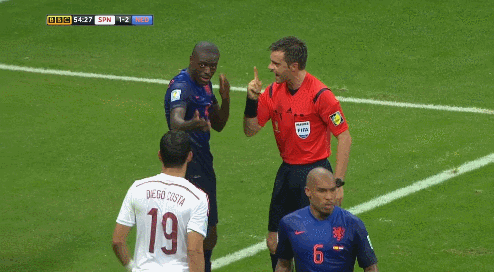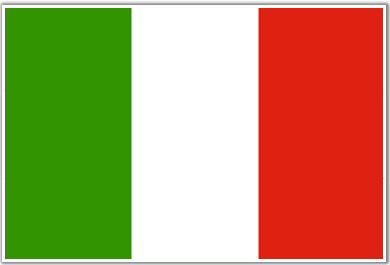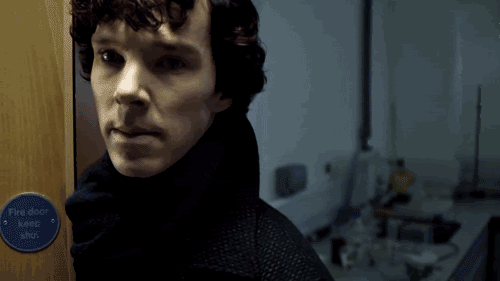-
Hey, guest user. Hope you're enjoying NeoGAF! Have you considered registering for an account? Come join us and add your take to the daily discourse.
You are using an out of date browser. It may not display this or other websites correctly.
You should upgrade or use an alternative browser.
You should upgrade or use an alternative browser.
2014 FIFA World Cup |OT| Spa1n v The Netherland5
- Thread starter Wes
- Start date
- Status
- Not open for further replies.
Is de Gea going to start for Spain now?
I doubt it, Del Bosque is a dinosaur
Kiraly
Member
God damnit! I was a little ill with a fever yesterday so I went to bed early (right after Alonso scored the penalty)...
Haha jesus man... How did it feel waking up this morning and checking the headlines?
Maintenance
Member
Good day GAF, I'm back and ready for today's battles. Will stay here until after Cote d'ivoire vs Japan.
Shanks D Zoro
Banned
sobnekahcS moT
Member
Still can't believe what happened yesterday. _0_
Maintenance
Member
My predictions for today are:
Colombia
Uruguay
Italy
Cote d'ivoire
Colombia
Uruguay
Italy
Cote d'ivoire
I miss Gattuso. His hometown is only 2 hours from where I come from. We need more Calabrese in our team.
Still can't believe what happened yesterday. _0_
So do Spaniards they are inconsolable
Maintenance
Member
So do Spaniards they are salty
Fix'd
industrian
will gently cradle you as time slowly ticks away.

Posted already?
I'm almost being deafened by the sound of Manchester United fans tentatively right-clicking and saving this.
Gentle Rodriguez
Member
I didn't even check what matches are being played today.
Suarez !
England - Italy !!
Ivory Coast - Japan !!!
Watch Greece get destroyed !!!!
Suarez !
England - Italy !!
Ivory Coast - Japan !!!
Watch Greece get destroyed !!!!
Gormless Noodle
Member
Still can't believe what happened yesterday. _0_
Me neither, I keep looking at the NOS recap. But the comeback is real. Let's hope this continues.
Also excited for England v Italy tonight.
Storm Kyleis
Member
Italian here, can't wait for tonight's match 
Good morning gaf, today colombia will destroy the greeks and their boring football.
I will be rooting for you! #greekdrama
Do you not love football? Watch the game ffsWhat were they doing at 3-1? At that scoreline, I'd have been tempted to play defensively
StriKeVillain
Banned
I hope Colombia hangs 4 on Greece today. Cuadrado, J Rodriguez and Guarin wrecking crew.
Good morning gaf, today colombia will destroy the greeks and their boring football.
their boring title won greece more titles than columbia ever will in the future.
Insane Metal
Member
England and Italy, hmmmm. Should be a nice game.
their boring title won greece more titles than columbia ever will in the future.
Columbia almost won the Euro in 96
RedBaron17
Member
their boring title won greece more titles than columbia ever will in the future.

Greece has 1 European title. Colombia has 1 Copa America title.
brokenbeans
Banned
I hope Colombia hangs 4 on Greece today. Cuadrado, J Rodriguez and Guarin wrecking crew.
They will smash it.
robertsan21
Member
So pumped up that Spain lost last night!
The teams I am rooting for is
Germany
Uruguay
Brazil
The teams I am rooting for is
Germany
Uruguay
Brazil
Yep. I don't know how that happened.Euro 2004 was the worst ever
Euro 2004 was the worst ever
Agree loosing to Greece playing at home was a big let down
Agree loosing to Greece playing at home was a big let down
Best match was you vs us (England) in the ro 16. Shoulda won that
Gentle Rodriguez
Member
Yep. I don't know how that happened.
IIRC there wasn't a single team that really stood out, Greece had a mix of a good draw and somehow winning games in which they weren't even playing well.

How great was this.
How great is this image. (probably been posted to death already)

By Jonathan Liew
12:01PM BST 14 Jun 2014
For as long as anyone can remember, Dutch teams have played 4-3-3. But Louis van Gaal, the man who helped to create both the modern Dutch blueprint and the modern Spanish blueprint, ripped them up and started afresh
By 1661, Rembrandt had fallen on hard times. Golden Age Amsterdam was turning against the gritty, unglamorous realism of his paintings. They wanted lustre, not texture.
But Rembrandt was not going to go down without a fight. And so, when he was commissioned to paint a historical scene to hang in Amsterdam Town Hall, he knew that he would be expected to produce something decorous, reverent, heroic: a bold piece full of strong colours and glorious poses, in keeping with the style of the age.
The Conspiracy of Claudius Civilis, when it emerged, was none of these things. It was harsh, dimly lit, borderline disturbing. The barbarian chieftain of the title is depicted with his one blind eye not obscured in profile, but front-on, in full and queasy detail.
It was one of Rembrandts greatest works. But it was too harrowing by far for the Amsterdam city council, who rejected it and returned it to the artist. In financial difficulties and now with a five-metre painting nobody wanted, Rembrandt was forced into the single most traumatic act that a painter can undertake.
With a sharp knife, he hacked down his own masterpiece to around a quarter its original size in order to prepare it for sale. Rembrandt had learned the hard way that sometimes, necessity forces you to kill the very thing you created.
---
Hollands 5-1 win over Spain on Friday night a shock with which the world of football is still struggling to come to terms was held in many quarters as a return to classic Dutch values, after the organised thuggery of the 2010 World Cup final. On BBC television, Thierry Henry evoked Johan Cruyff, saying that he and coach Louis van Gaal brought Total Football to Barcelona and the Spanish squad; I think tonight, the Dutch got their style back.
In one sense, this was true. Holland played with a verve, a swagger and a purpose that we have not seen from them since at least the late 1980s, when a team containing Ruud Gullit, Frank Rijkaard and Marco van Basten swept to the European Championship under Rinus Michels, himself the architect of Total Football at Ajax in the late 1960s. The sight of blue shirts (not orange, unfortunately; thank the sages at Fifa for that) swarming all over the world champions was a sight to stir all football fans of a certain age. The Dutch were masters of their craft once more.
But if you study each of their five goals in turn, the picture becomes a little fuzzier. Three of the goals came from long diagonal balls over the Spanish defence. Another, Stefan de Vrijs oh-god-Im-about-to-crash-into-the-post header, came from a set-piece from the left. And one more came from the leaden boot of Iker Casillas, allowing the ball to squirm away so Robin van Persie could win it.
Then there are the statistics. In a resounding victory, Holland had just 43 per cent of possession, and committed 18 fouls to Spains five.
So was this the return of Total Football? Or have Holland and Louis van Gaal managed to create something completely new?
---
For as long as anyone can remember, Dutch teams have played 4-3-3. At Ajax, 4-3-3 is the formation they play from under-9 level all the way to the first team. It is not so much a philosophy as a religion. Under Cruyff, Barcelona adopted the same style, winning the European Cup for the first time in 1992 and setting a blueprint that all future managers Van Gaal included felt obligated to follow. The influence of Cruyff and Barcelona is evident in the Spain side of recent years: short and sharp passes, quick interchanges, fluidity in the final third, and ruthless pressing without the ball.
When Van Gaal took over the Holland job after the disaster of Euro 2012 and started planning for this tournament, 4-3-3 was the logical way to go. He had perhaps the worlds best winger in Arjen Robben, one of the worlds best strikers in Van Persie, and attacking midfielders in Wesley Sneijder and Kevin Strootman who could link defence and attack.
Strootman was the key to the system. A strong, quick runner with exceptional vision, Strootmans ability to carry the ball out of midfield at speed and set defences on the back foot gave Holland a wealth of angles going forward. Just 24 years old and at Roma, he has invited comparisons with Roy Keane and Yaya Toure.
Strootman is a player who brings a balance to the entire team, Van Gaal said. I will have players like Rafael van der Vaart and Sneijder, of course, but no one will be able to replace Kevin.
Then, in April, Strootman got injured. The one player who made the system work was out of the World Cup. For Van Gaal, a man who admits he needs time to get teams playing in the system he wants, now had no system and no time.
As he mulled over his options, one the nuclear option presented itself. The full-backs Daryl Janmaat and Daley Blind often looked exposed when playing in a back four. Perhaps an extra central defender would give them more cover. Perhaps introducing a second defensive midfielder would create more space further up the field for Robben. All the evidence pointed to a three-man defence.
And yet. Van Gaal was the man who helped to create both the modern Dutch blueprint and the modern Spanish blueprint. Could he really bring himself to rip up both?
---
Van Gaal and Cruyff do not get on. Van Gaal claims the feud goes back to 1989: the story goes that Van Gaal was having dinner at Cruyffs house, left abruptly because he was informed that his sister had died, and Cruyff got offended. Cruyff, for his part, describes this as rubbish. You wonder whether he has one or two screws loose, Cruyff said of Van Gaal in 2009.
However it started, the tension between the two is very real. In 2011, the Ajax board tried to hire Van Gaal as a technical director. Cruyff, a fellow board member, went berserk when he learned of the appointment, taking Ajax to court in an attempt to block it on the grounds that he had not been consulted. Cruyff won, and the appointment was overturned.
Cruyff and Van Gaal were both steeped in Ajax tradition and share many of the same ideas of football, not least a steadfast belief in 4-3-3 and quick passing. But there is one fundamental difference between them.
Cruyff won pretty much everything there was to win at club level, played in a World Cup final, charmed an entire generation. Van Gaal, an enterprising and cerebral midfielder six years his junior, joined Ajax in 1972 with hopes of emulating him. He left after a year without making a single first-team appearance. Despite spending almost a decade at Sparta Rotterdam, his playing career was unremarkable. By his own lofty standards, it was a failure.
Perhaps that shaped their differing views of football. Cruyff played Total Football in its purest form, with 10 outfield players all theoretically interchangeable in their roles. It required outrageous talents, thrilling individuality and pure instinct. To play the Cruyff way, you had to pack the team with gifted individuals and allow them to feel their way through the game.
For Van Gaal, stars were of secondary importance. The system was king. If a player didnt fit into the system, or didnt want to fit into the system, he was out. This is why Van Gaal is such a fiercely divisive character amongst players: like Jose Mourinho, he decides very quickly whether he wants you or not. If youre his guy, great. If not, it might be worth a quick call to your agent.
At Barcelona in 1999, he insisted on playing Rivaldo on the left. Naturally, Rivaldo wanted to play in the centre. Rivaldo was temporarily dropped, but despite losing the battle he won the war: Van Gaal was sacked at the end of the season.
Two years later, Van Gaal was back. Within three weeks, and before a ball had even been kicked, Rivaldo saw what was coming, and left. Van Gaal is the main cause of my departure, he said. I don't like Van Gaal, and I am sure that he doesnt like me, either.
At Bayern Munich, he fell out with Luca Toni and Lucio, the latter testifying that Van Gaal hurt me more than anyone else in football. But for those he identified as having potential, the rewards could be lucrative. Under Van Gaals tutelage, Bastian Schweinsteiger was transformed from a winger into one of the worlds best midfielders. David Alaba was turned from a midfielder into a marauding left-back.
You have to play as a team and not as individuals, Van Gaal said earlier this year. That's why Im always going back to the vision, then the team, and then which players fit in my system, a 1-4-3-3, because Im always playing that.
Except now, even that was being questioned.
---
The Ajax and Holland sides of the 1970s sometimes played what could be classed as a 3-4-3. Ruud Krol would play as a sweeper, occasionally mopping up behind the defence, occasionally stepping into midfield to form the base of an attack. It was an attacking system, based on possession and smooth transitions.
The 3-4-3 that Van Gaal played on Friday night was essentially a reactive formation designed to combat Spains dominant midfield. The wing-backs did not venture too far forward, and with midfielders Nigel De Jong and Jonathan de Guzman essentially screening the back three, Holland reverted to a 5-2-3, or even a 7-3, without the ball. And seeing as this was Spain, they were quite often without the ball.
There was a crudeness to them, too. From the very start, Holland were physical in the challenge and spicy in the tackle. The first foul, by Ron Vlaar on Diego Costa, came after just 20 seconds. The second, by Janmaat on Xabi Alonso, came after less than five minutes. Both looked so blatant they might almost have been premeditated to knock Spain off their stride. It may not have been 2010 exactly, but 18 fouls to five tells its own story.
Then, when Holland got the ball, they would move it not with short passes and intricate triangles, but with long diagonal balls, unleashing the pace of Robben and the movement of Van Persie, exposing Spains high line and creaky defence.
Was it classically Dutch? Van Gaal argued that it was.
For five weeks in a row weve been focusing on this system, because 4-3-3 is what we played in the qualification matches, he said after the game. This is really the Dutch school with wingers. But its more than that. The Dutch doctrine is exercising pressure playing in a compact way, but also switching positions.
But was it the return of Total Football? Its a hard case to make.
---
Perhaps the greatest irony of all was that Spain, as ever, were playing a very similar style of 4-3-3 to the one that Cruyff and later Van Gaal had pioneered at Barcelona. Van Gaals fingerprints are all over Spains recent successes: he gave Xavi, Andres Iniesta, Carles Puyol and Victor Valdes their Barcelona debuts, oversaw the progress of Gerard Pique and Cesc Fabregas at La Masia (although famously, he shoved a 14-year-old Pique to the ground the first time they met).
It was Bayern Munich who offered the blueprint for overcoming tiki-taka, when they demolished Barcelona 7-0 in the Champions League semi-final last year. Van Gaals protégés Schweinsteiger, Alaba and Robben were all in that side.
Now, with Holland, he has done it again, and in so doing may well have struck another nail in the coffin of modern possession football, a doctrine he helped to create. If that sounds fanciful, then at the very least he has played a leading role in its two greatest catastrophes.
Like Rembrandt, perhaps Van Gaal has finally managed to kill the very thing he created.
Holland's World Cup win over Spain wasn't the return of Total Football - Louis van Gaal has created something new - Telegraph
WAR recon zero
Banned
VAMOS COLOMBIA NOJODA

How great was this.
His eyes.
Nope, not this one, never happend, nope, nope, don't remember anything.
Best match was you vs us (England) in the ro 16. Shoulda won that
Almost had a hearth attack that night, no you shouldn't
Shanks D Zoro
Banned
FORZA AZZURRIIIIIII

I love you. You
and Ancelotti
Shake Appeal
Member
That'll be an impressive feat for the suspended Guarin.I hope Colombia hangs 4 on Greece today. Cuadrado, J Rodriguez and Guarin wrecking crew.
Mother Green
Member
I'm looking for a video of last nights game with dutch commentary. Just the goals is fine by me. I wanna hear the emotions! Can someone deliver please?
http://www.dumpert.nl/mediabase/660...ls_van_nederland_met_commentaar_van_jack.htmlI'm looking for a video of last nights game with dutch commentary. Just the goals is fine by me. I wanna hear the emotions! Can someone deliver please?
edit: Jack van Gelder is a radio commentator, not the TV commentator (unfortunately).
Mother Green
Member
http://www.dumpert.nl/mediabase/660...ls_van_nederland_met_commentaar_van_jack.html
edit: Jack van Gelder is a radio commentator, not the TV commentator (unfortunately).
Nice! Thank you so much!
I'm looking for a video of last nights game with dutch commentary. Just the goals is fine by me. I wanna hear the emotions! Can someone deliver please?
edit : nvm
- Status
- Not open for further replies.






